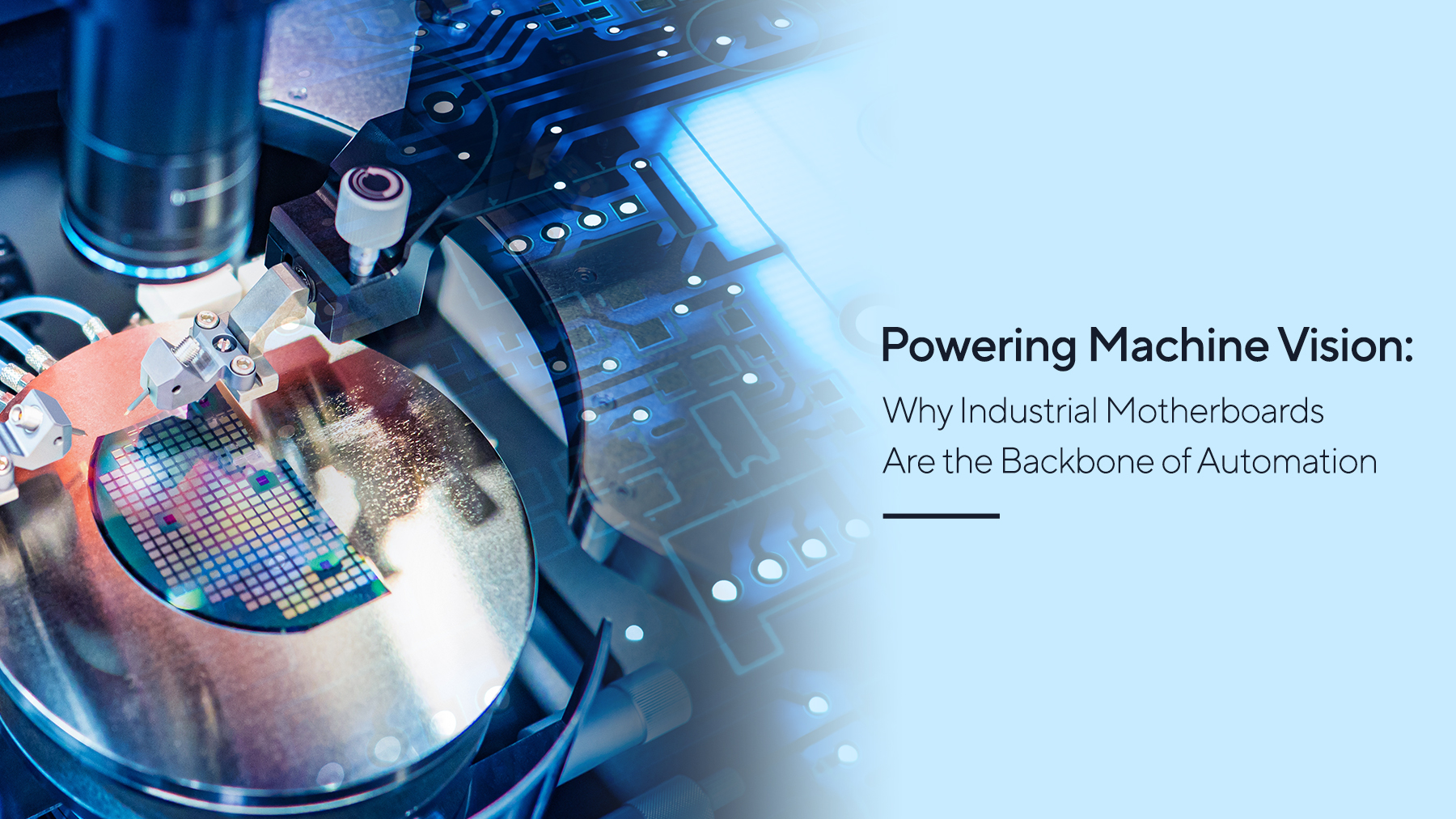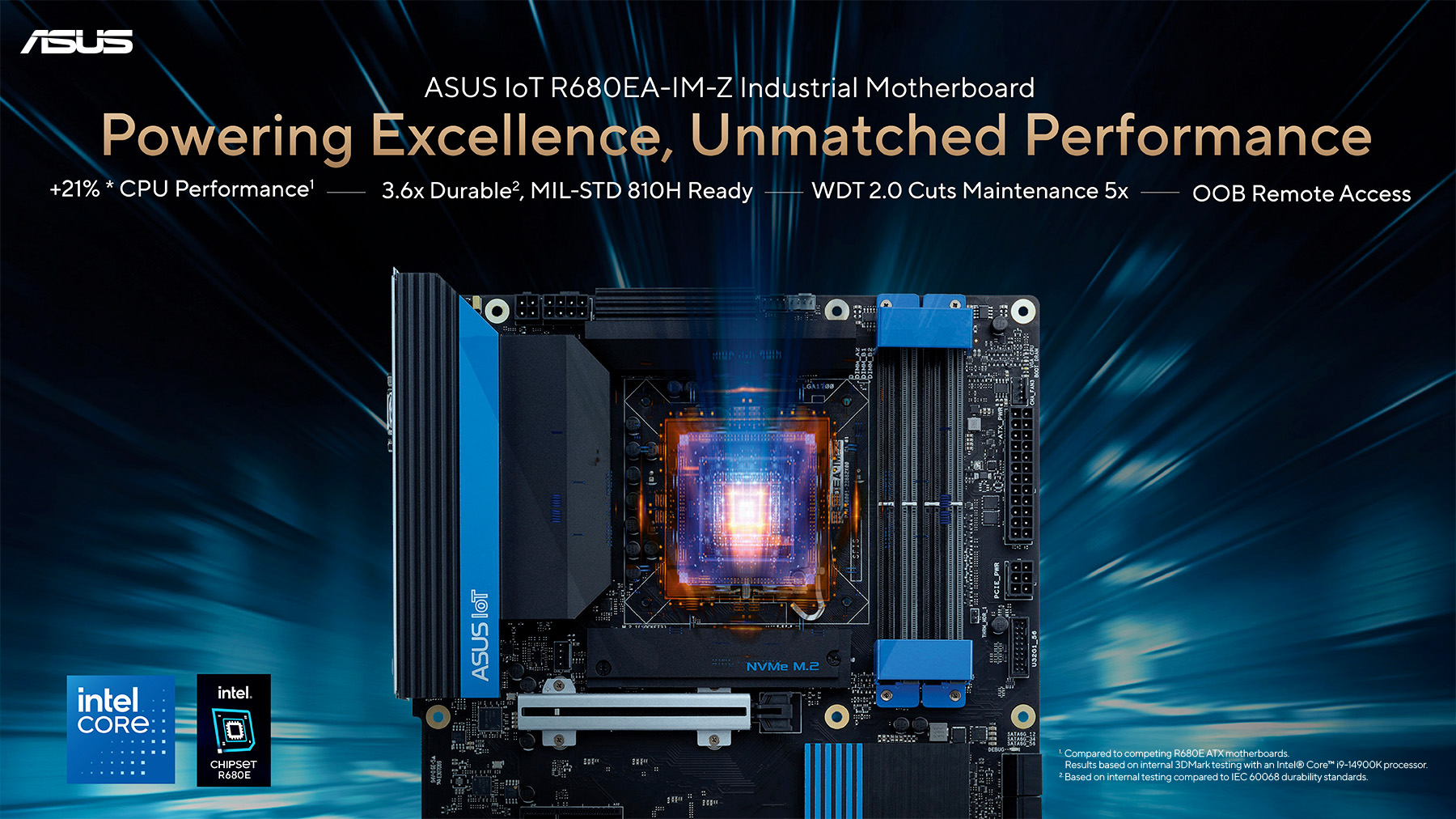Powering Machine Vision: Why Industrial Motherboards Are the Backbone of Automation

Machine vision is reshaping modern industry. From automated inspection on assembly lines to AI-assisted robotics, this technology enables smarter, faster, and more accurate decision-making. As global demand for automation rises, machine vision systems are becoming indispensable tools for driving productivity, consistency, and cost-efficiency.
Growing Importance of Machine Vision
Today’s factories depend on machine vision to detect defects, identify parts, guide robotic arms, and verify product quality at high speeds. This technology enhances operations across a wide range of industries — including automotive, electronics, pharmaceuticals, agriculture, and healthcare. Unlike manual inspection, machine vision systems offer unmatched speed, precision, and 24/7 reliability.
At the core of these systems is the ability to capture and process visual data in real time, often paired with AI models for object detection, pattern recognition, or classification — all happening at the edge.
Challenges of Machine Vision Deployment
Deploying machine vision in production environments presents unique challenges. Systems must be powerful and sophisticated enough to handle real-time processing of high-resolution images while also being durable enough to operate in harsh industrial environments. Integration with legacy systems, complex calibration, and ongoing maintenance also pose challenges for manufacturers.
Building An Effective Machine Vision System
A robust machine vision system is more than just a camera and a screen. It requires a combination of components working in harmony.
- High-speed imaging sensors and cameras to capture quality visuals
- AI accelerators (e.g., GPUs or FPGAs) for fast, intelligent processing
- Multi-camera support and high-bandwidth I/O for concurrent input
- Reliable lighting, optics, and lenses for consistent results
- Advanced thermal and power management to ensure uninterrupted performance
At the center of all of it is the computing platform — a motherboard that’s powerful, rugged, and scalable enough to process demanding workloads in a range of environments.
Industrial Motherboards
Industrial motherboards are built to provide the performance and reliability that machine vision applications demand. Unlike consumer-grade hardware, industrial motherboards are engineered to:
- Handle real-time image processing and AI workloads;
- Support PCIe® expansion for GPUs, frame grabbers, or custom I/O;
- Survive extreme temperatures, shocks, and power fluctuations;
- Operate continuously in mission-critical environments;
- Enable remote diagnostics and recovery to minimize maintenance needs.
With the rise of edge computing, industrial motherboards now function as intelligent nodes — not just processing images, but analyzing them and triggering automated actions in milliseconds.
A Vision-Ready Platform: ASUS IoT R680EA-IM-Z

Purpose-built for smart manufacturing and industrial AI, the ASUS IoT R680EA-IM-Z delivers up to 21%-greater CPU performance1. with 14th Gen Intel® Core™ processors, making it ideal for real-time inference and vision inspection. The R680EA-IM-Z supports Intel’s latest platform, Bartlett Lake-S, ensuring next-generation scalability and reliability. Offering support for PCIe® Gen 5, USB 3.2, and rich I/O, it also integrates easily with AI accelerators and high-speed cameras.
Tested to meet U.S. MIL-STD 810H standards, the ASUS IoT R680EA-IM-Z features Watchdog Timer 2.0 and out-of-band (OOB) management to ensure system stability and reduce downtime. R680EA-IM-Z also includes an automated BIOS repair mechanism for reliable startups as well as OOB recovery tools. These features speed up the de-bug process by as much 500%. For example, the fully manual de-bug process takes approximately 70 minutes. With WDT 1.0, the process was automatic and takes approximately 50 minutes. Now, with WDT 2.0, the automatic process takes a little as 10 minutes.
Looking Ahead
As demand for smarter automation grows, manufacturers will increasingly depend on the hardware that powers these systems. ASUS offers a range of industrial motherboards for vision systems that are fast, reliable, and ready for tomorrow’s challenges.
1. Compared to competing R680E ATX motherboards. Results based on internal 3DMark testing with an Intel® Core™ i9-14900K processor.
R680E ATX Motherboard, High-Computing Power, MIL-STD 810H DIMM Lock and PCIe Holder, ASUS IoT's Dedicated WDT 2.0, Integrated I/O, Dedicated Heatsink, Wide Operating Temperature, Out-of-Band
